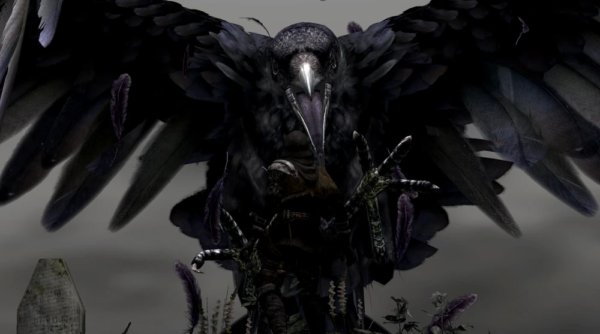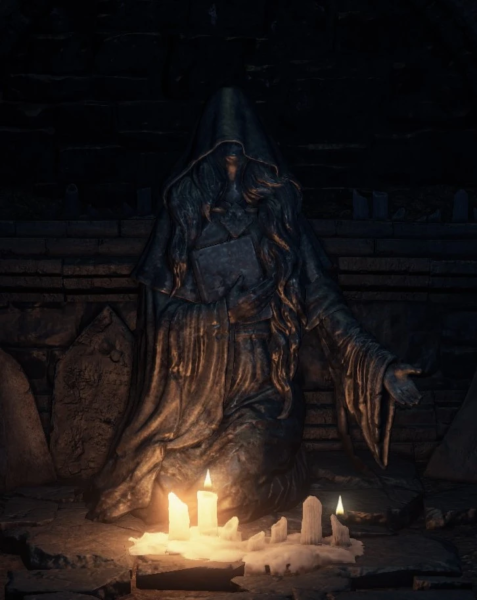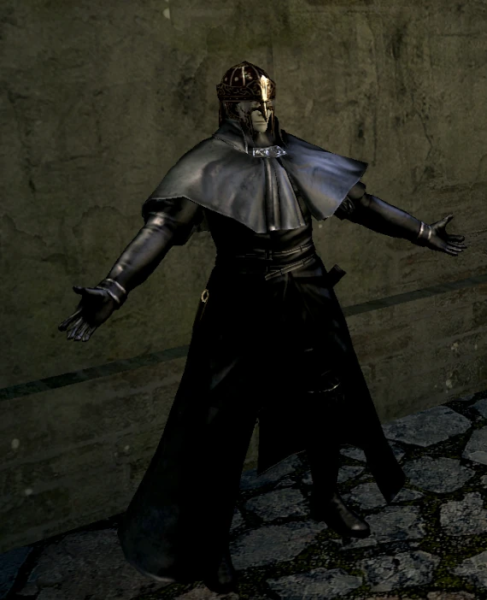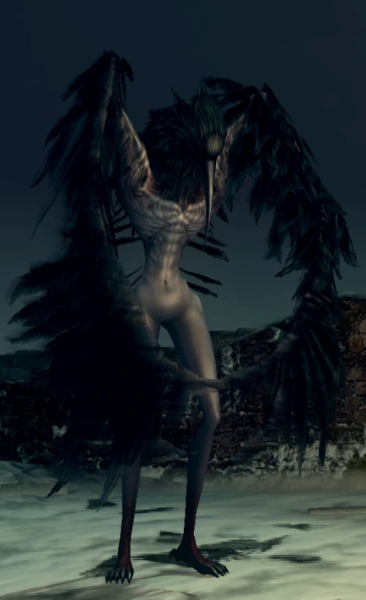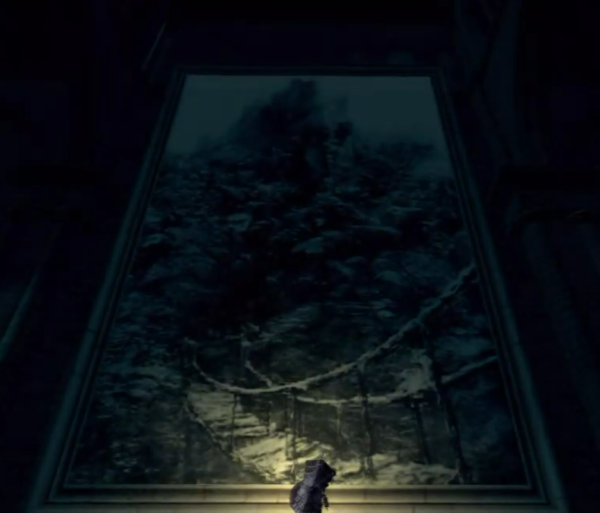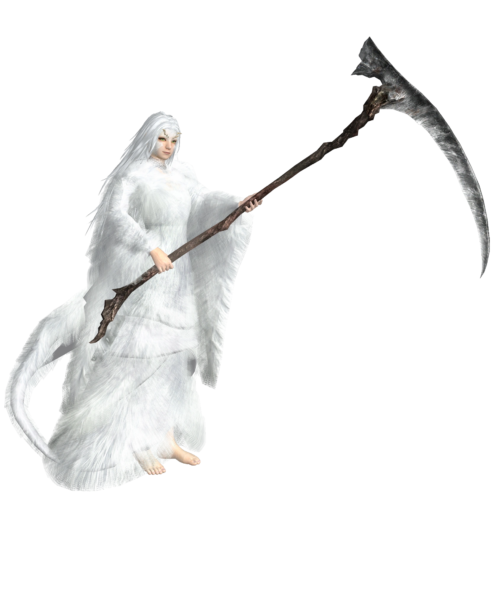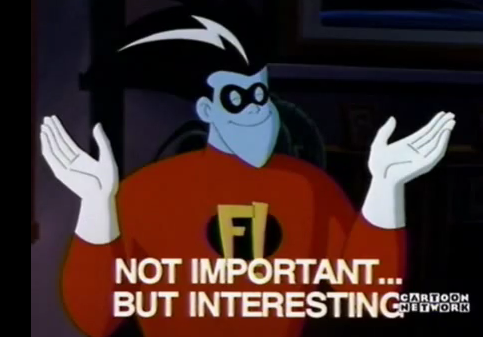*written to entertain both hardcore fans and fandom rubberneckers
i made the mistake of thinking about dark souls lore the other day after choosing to make myself mad about the remaster again, but in the worst possible way. soulsborne fans know to fear and run from anyone who starts talking about this unseen character known only through item descriptions: velka, goddess of sin. if you start talking about velka you’re too far gone in the souls sauce and about to spout some of the most unhinged nonsense ever uttered by a human on the entire history of the planet. velka and the highly secretive “plot against the gods” are quietly mentioned in less than 10 item descriptions. no character utters her name or speaks of the rebellion she participated in, she and her comrades do not appear in the game…probably. its complicated.
her inclusion initially reads as a throw-away means of world-building; much like the now infamous line about the “clone wars” in “star wars: a new hope” that was needlessly fleshed out into a trilogy that haunts us even to this day, the item descriptions serve to establish that you have entered a world overflowing with heroes and history that you were not privy to nor took part in. these events are such a basic foundation of lordran history that no one mentions it because it would be inorganic and narratively heavy-handed. its like if we walked around talking about when lincoln was shot on a day to day basis just in case anyone wasn’t up to speed.
anyway, this thought process started after i realized how fucking weird it is that a giant crow transports you from undead asylum to firelink shrine…why would it do that??? like, yes, obviously it’s a gameplay contrivance in order to get you from point A to point B with a cinematic, fantastical flair, i understand that. i also understand that velka herself is a gameplay contrivance with story written around it to soften the landing, but unfortunately, dark souls is a thread that unravels quickly when you pick at it, revealing shocking narrative cohesion underneath. if you’re completely insane, that is.
we will do this in a journalistic manner: who, what, when, where, why. but first, it requires a lot of dark souls history/lore context. it’s a lot. stick with me.
A VERY BRIEF HISTORY OF LORDRAN
in the age of ancients, the world was naught but fog, rocks, archtrees, and everlasting, immortal, semi-living dragons. then, one day, there was fire. and with fire came disparity, and that’s where the trouble really began.
drawn by the light of the supernatural fire of the first flame, beings emerged from the darkness and found a strange power in the flicker of the flame: the lord souls. those who found the strongest souls first became the most powerful lords: nito, first of the dead, the witch of izalith (not appearing in this story), gwyn, lord of sunlight, who split his flame amongst his knights (and later to those he sought political ally-ship with), and the furtive pygmy, the progenitor of humanity, so easily forgotten. “gods” in dark souls are a separate race from humans who are differentiated by their size, their innate supernatural abilities, and mortality (though they have longevity). in the wild and wacky world of dark souls, “gods” can be killed easily. humans, and by extension the player avatar, are only dead for a temporary period of time before they are restored to a desiccated, but recoverable, state.
armed with their newfound powers, the gods and the humans took on the enormous stone dragons that reigned over the earth. one albino dragon born without the stone scales of immortality, seath the scaleless, betrayed his own kind in bitter revenge over his inevitable death. this was widely acknowledged as a “bitch move” on his part, however, it did lead to victory over the dragons (though they were unsuccessful in wiping them all out). thus began the age of fire. this is when our story takes place.
but now, the fire fades.
WHO IS VELKA, GODDESS OF SIN?
i don’t know.
the clearest, objective physical depiction we have of her comes from a statue in dark souls 3. her face is hooded, one hand clutches her book of the guilty while the other is outstretched in welcome. she is kneeling before a set of lit candles, reminiscent of at least one firekeeper of old. the kneeling also obfuscates her height, which would be alarming for a human but perfectly normal for a “god”.
WHat IS VELKA, GODDESS OF SIN?
by the time the player begins their journey in lordran, she is considered a heretic deity with heretic worshipers. velka’s purpose was to define sin and mete out justice. she paid particular attention to those who broke covenants or angered the gods and would provide the names of sinners to darksun gwyndolin’s (gwyn’s lastborn) blades of the darkmoon so that they could hunt the guilty down. early in development, velka and gywndolin were warring PVP factions, but this was altered before release so that they were semi-aligned hunting partners instead of rivals.
blades of the darkmoon collect souvenirs of reprisal as proof of their completed task. curiously, the only enemy you can farm this from are crow demons, who have no ears. miyazaki himself states that the crow demons were “originally designed as worshipers of the Goddess Velka whose bodies were warped by their devotion”; perhaps the ear-removal practices of the darkmoon blades are a holdover from the original agents of justice. curiously, these demons can be found only in the painted world of ariamis, which will be discussed further in “where”. it’s complicated.
velka’s human representatives/worshipers are witches (as velka herself is described as one) and pardoners, who offer “absolution” to players who commit sins and update the book of the guilty in her absence. take, for example, this corvid looking fellow.
oswald of carim appears out of fucking nowhere immediately after you ring the first bell of awakening (for non-fans: this is the first objective of the game and can be done immediately after the third boss fight of the game with a pair of gargoyles). you’re on a fucking rooftop you had to climb 800 stairs to reach and he fucking teleports behind you like its nothing personal, kid. he’s not even in a convenient location that would make his sudden appearance a useful contrivance. he parks his ass on this rooftop forever and you have to hoof it the full distance every time you get cursed by fart gas. he just stands there in his fucking bdsm raincoat looking like he just got tossed out of the vampire freaks meetup for calling the host a slut. anyway:
oswald provides many online play related services, such as absolving the player of “sin“, a numerical value the computer keeps track of. there are two types of sin; one is accrued when you aggro an NPC by setting down your controller while standing too close to them or doing something your covenant leader hates. by paying oswald an absolutely insane amount of souls, you can (usually) restore that number to 0 and take another crack at building those relationships up.
the other type of sin is built up by invading other players in PVP and can only be cleared after getting clobbered to death by a darkmoon blade. velka, (by way of the computer) evidently makes a distinction between these two types of sins and metes out what she views as appropriate punishments. beating on someone can be forgiven with a payout. killing someone is an “eye for an eye” kind of deal.
oswald is the most direct source of velka information: he wields her rapier and talisman so that he can cast her miracles (a type of spell created by the gods with a wide range of effects), “karmic justice” and “vow of silence”. these are the only two miracles with purple auras, distinguishing them as velka’s own creations. miracles cast by other gods typically scale with the FAITH stat; velka’s weapons and spells scale with INT. INT, curiously, is the stat typically associated with the artificially derived magic arts, such as the soul sorceries or the artificial pyromancy flame. “karmic justice” is a version of the miracle emit force that is reactive rather than manually cast as a “tit-for-tat” kind of response to violence. “vow of silence” is a spell that suppresses any attempts to cast magic and is my best friend in the world. “karmic justice” can be purchased from oswald. “vow of silence” is more complicated and will be covered in “where”.
the rapier is, frankly, an insane weapon. it can only be upgraded with the ultra rare twinkling titanite used to upgrade weapons literally classed as “unique” in the game data. these are cursed weapons, blessed weapons, and the weapons of those who serve directly under the gods. her rapier deals the equally rare “occult” damage modifier. like all things in this stupid game, occult damage has its own storied history and importance.
~A BRIEF EXPLANATION OF DS1 UPGRADE MECHANICS~
the most firm proof we have that fromsoft prioritizes storytelling over gameplay experience can be seen in their approach to weapon upgrades in DS1, which feels like it was designed specifically to torture everyone who played the game. focusing strictly on what’s relevant here: you can upgrade weapons for bonus damage modifiers including adding elemental damage or auxiliary effects to target certain enemies/change the scaling. divine weapons are used to kill necromancy-involved undead and are incredibly helpful when trying to navigate the catacombs; they scale with FAITH and are associated with the gods and/or their human representatives from an anti-undead church known as “the way of white” run by gwyn’s uncle, allfather lloyd. they do bonus damage to skeletons…and velka’s crow demons.
GOOD LORD HE’S NAKED
a divine weapon that has been upgraded 5 times can be changed after the player acquires the “dark ember“, a black flame reminiscent of the dark soul. occult weapons were used to “hunt the gods” and maintain the FAITH scaling of their divine origins, with the exception of those with innate occult damage. for the most part, the player is expected to expend a huge amount of precious titanite in order to ascend one of their own weapons into a very niche special use item. otherwise, they are stuck with the massive occult infused club they have to fight a mimic for. this is also complicated and will also be covered in “where”.
there are only three weapons that have innate occult damage: the dark hand (a gauntlet that drains humanity from its victims), velka’s INT scaling rapier (designed to harm gods?!), and priscilla’s dagger, which is a small sword torn from the severed tail of the loathed guardian (and willing captive) of the painted world (complicated, “where”). occult does massive damage to the remaining sentinels of anor londo, gwyn’s knights, dragonslayer ornstein, darksun gwyndolin, and gwyn himself. this is a very pointed and specific list that is targeting a specific family tree and their servants. this is especially eyebrow-raising when paired with the discovery of the effigy shield in the catacombs, guarded by one of gwyn’s elite black knights. there are VERY few black knights in the game, and many of them are stationed in places to put an abrupt end to any nosy undead snooping:
Frightful occult shield. Defends against divine weapons and lightning.
In an ill-fated plot to destroy the very gods, the followers of the occult once attempted to steal the power of Gravelord Nito, the first of the dead.
oh my. those are some very specific things to guard against. incidentally, gwyn and his firstborn’s miracles are lightning-based. this is not true for the rest of his family.
oswald’s fit is black and “said to be imbued with velka’s mystical power”. the robe identifies him as being a cleric, explaining why he can cast one of the way of white’s miracles, “great heal”. he also sells rings of sacrifice, which are made “in a sacrificial rite of velka”.
cut content suggests that velka was not unreasonable and that the player could have, at one point, requested to leave a covenant (the in-game PVP factions) by purchasing an affidavit. her approach to dealing with sin was closer to judicial practices rather than biblical, as one might be primed to anticipate from a “goddess”. after all…it’s only human to commit a sin! KEH-HEH-HEH-HEH!
WHere IS VELKA, GODDESS OF SIN?
in the room with us, right now. ha ha naw im just messin with you. however, you can find traces of her in some truly unusual places. but those unfamiliar with the series will need to be introduced to a few locations where velka’s crap was left.
WHAT IS THE undead asylum?
when the furtive pygmy picked out his tiny ember from the first flame, he had discovered the titular dark soul. we literally don’t have time to get into that. what you do have to know right now is that that the power of the dark soul burned in opposition to the power of the lord souls; as the first flame faded (as all fires do), the age of fire waned and the age of dark began to loom over the horizon. this caused gwyn to freak his ass off and set off a whole bunch of events that caused a lot of problems. the gods branded those carrying the dark soul with the darksign, a brand of fire that severely limited mankind’s blossoming powers as the age of dark drew near. the aforementioned way of white covenant would hunt the undead and lock them up in undead asylums in the hopes of prolonging the age of fire indefinitely.
this is where you, the player, begin your journey. you escape the undead asylum and a giant crow (!!!) whisks you away to firelink shrine. later, you can return to the asylum via the same crow only to discover it’s now crawling with gwyn’s special forces. the cell you once occupied is guarded by a black knight and is now host to a peculiar doll.
-
A strange doll in strange dress.
There once was an abomination who had no place in this world.
She clutched this doll tightly, and eventually was drawn into a cold and lonely painted world.
- with this doll in your inventory, you can enter the painted world of ariamis. i don’t know how this doll gets here. someone is helping the chosen undead in a very strange and specific way. i don’t have a direct answer as to who this could be. the number of potential suspects is extremely limited but absolutely, reasonably could include one of the other crows who has taken up residence at the asylum with a love of collecting/trading trinkets.
-
WHAT IS THE PAINTED WORLD OF ARIAMIS?
a junkyard. it is a literal painting that the chosen undead can jump into mario 64 style or like steve from blues clues. the painting hangs in an anor londo chapel facing statues of gwyn and his family…uh. kind of. it’s a statue of gwyn, his daughter, and a space where a statue of his firstborn should be. no space is allocated for a statue of poor darksun gwyndolin. life is hard when you have snakes (which are considered “imperfect dragons“) for legs.
gwyn’s firstborn son inherited his lightning bolts and sunlight, but he upset his father and the whole world so much that he was chucked from the historical record and kicked out of the family home. in dark souls 1, it is not explicitly stated what gwyn’s firstborn did to deserve the stalin treatment, but dark souls 3 made it explicit: he allied with the dragons. its unclear if the reason for his expulsion happened before or after his father sacrificed himself to the first flame, but the expulsion itself happened after.
it is not certain how relevant this information is because there is so little to go on, but it should be noted that the painting was originally made to house a single woman: crossbreed priscilla, half-dragon (!!!) and half-god (presumably, given her height). we have no certain origin story for priscilla, but a few things can be safely presumed: seath the scaleless, who had been given a sliver of gwyn’s lord soul and the title of duke since the war against the dragons, had some kind of hand in her creation; they are both the only white dragons in the entire game (and maybe all of lordran history) and seath has a yucky habit of unethical experimentation. something about her unholy (literally, remember how her tail-weapon does occult damage?) origin imbued her with a power even the gods feared: lifehunt. priscilla represents the antithesis to the life-giving first flame; her world is cold, dark and hostile to sunlight. she is a dragon-enough to be shunned from society and now peacefully reigns over a place where those who threaten the hegemony of the gods are exiled.
the painting is surrounded by special guardians working overtime to make sure people like you don’t get in. they are not facing the painting to make sure things don’t get out. the are facing away from it and at YOU.
~rampant speculation time~
this painting is a source of deep lore fascination for me. why would anyone keep a painting around full of people who hate you and want to kill you? why would you keep it so close to where you live if it scares you so much? one can only presume that there HAD to have been a really good reason, as the painting has been replaced multiple times by the time DS3 rolls around and its inhabitants relocate willingly each and every time. they even have people (well…crow people) moving into the painting because it feels like home. why was it kept, and in such good condition? why are the painting guardians attacking those who “threaten” the painting?
a very, very strange half-god, half-dragon woman, hidden in DS3’s iteration of the capital city of anor londo, calls dark sun gwyndolin her beloved brother (complicated). perhaps the kinship between this coterie of scaly freaks is more than just metaphorical. perhaps gwyndolin, yorshka, and priscilla are a branch of the gwyn family tree that was, for many reasons, cut off from public view to obfuscate the family’s close relationship with dragons, the eternal enemy of the gods.
i subscribe to the idea that seath was priscilla’s father; i think he assisted with her creation and her appearance/name in japanese is proof of his genetic influence, but i have a funnier (but entirely speculative) suggestion as for the identity of the “mother”. the japanese description of seath’s soul identifies him as gwyn’s son-in-law (?!), which is why he was given the title of duke. but we know that gwynevere married another inconsequential god, so we can strike her off the list of potential wives.
the thematic implications of gwyndolin sharing a boss theme with one of seath’s moonlight based creations is likely supposed to indicate that gwyndolin is the result of experimentation rather than seath’s spouse. additionally, they share much in common genetically/biologically (pale appearance, frailty, a swarming mass of tentacles where their legs should be) that would suggest direct influence rather than attraction. we don’t have time to get into moonlight right now so we’ll file it as “very tentative maybe, leaning no”.
so, maybe it was seath and the firstborn. can you think of a better reason to be obliterated from history than to be caught literally sleeping with the enemy? seath’s various experimentations must have been fruitful enough at one point to have spawned poor little priscilla, whose existence inadvertently birthed a terrible and frightening power that promised only endless death and destruction. gwyn must have been mortified. but…priscilla IS his granddaughter. so he did what he does to all his family members he doesn’t want to think about: he shoved it in a dark storage area.
there’s a point to this: let’s assume priscilla is the source of occult, god-killing power. then where better to plan a coup against the gods than in a pocket dimension they avoid out of disgust and shame? i suggest it was here that velka and her comrades began to discuss and plan an attack against the gods with those who had good reason to join in. after the coup failed, the painting guardians (who, as it turns out, guard other female members of gwyn’s family in DS3) were assigned to keep all threats, in and out of the painting, at bay.
proof in favor of my crackpot theory: because the history of gwyn’s firstborn has been deliberately destroyed, the guardians no longer remember the purpose of guarding the painting. gwyn’s firstborn goes on to find a new dragon husband by the time the player character finally meets him in DS3. LGBT win!
the miracle “vow is silence” is found on a corpse in the locked annex of the painted world, surrounded by a metric fuck-ton of crow demons. this annex also houses corpses from which the pardoner’s outfit, the aforementioned dark ember (unlocking the god-killing occult damage modifier), and velka’s rapier can be looted; no doubt these are the remains of previous pardoners and velka supporters who have long since passed and are fiercely guarded by velka’s crow demons. the description of the dark ember makes a point to say that no living blacksmith knows of it…likely because it was deliberately hidden from public memories like a few other things in lordran’s sordid past. such a dragon sex. maybe.
the dark ember may have come from the abyss, the source of human life. a spell to conjure this flame can be taught to you by karla the heretic witch.
what about the rest of anor londo?
not far from the painting, there is a secret room hidden by an illusory wall, completely devoid of light. this room contains the armor and signature weapon of havel the rock (the english translation misidentifies one of his warriors as the man himself, i do not believe havel appears in the game), one of gwyn’s many battlefield compatriots. havel is often misunderstood to be a hater of dragons based on the description of the miracle he invented and his use of a dragon’s tooth as a weapon, but DS3 seems to strongly suggest that havel actually loved dragons (havel surely felt a kinship or envy for their stone scales and sought to emulate the dragons in his armor). havel specifically fucking hated seath for betraying the dragons and found his magic repulsive. other dragons do not have the type of magic that havel’s spell is made to resist, only seath does.
this room also contains an ordinary, but very, very heavy wooden club with an occult modifier hidden within a mimic. havel, it seems, was intended to wield this during the attempted coup and was possibly the one to turn on his old battle companion over this son-in-law BS.
havel and his knights, or at least simulacrum of them, are paling around with gwyn’s firstborn on archdragon peak in DS3.
WHAT are the catacombs?
a place where the dead are animated, human and gods alike. it is the domain of gravelord nito who reigns over life and death through a power unrelated to the dark soul: his lord soul gives him dominion over the power of necromancy. the dead here walk at his discretion. nito fucking decides when you’re ready to die. here, there is no light that you don’t bring yourself. this is not gwyn’s domain.
velka’s influence is subtle here. the effigy shield guarded by the black knight is the first item to outright state that there was an attempt to usurp the power of the gods, specifically nito’s necromancy. the participants are described as “followers of the occult” and the image on the shield is a stylized depiction of a blacksmith local to the catacombs.
whatever they tried to do, it didn’t work. nito is a taking a big fat nap when the player stumbles upon him in the game and traces of the rebellion are nowhere to be found.
perhaps they sought to prevent gwyn from achieving his plan to extend the age of fire. perhaps it was a contentious decision.
and where else?
in DS3, her statue is located in the catacombs/sewers of the undead (human) settlement, a place stewed in the type of curses that velka’s boys can help you with. it is extremely strange to see a statue of a god in a (contemporary) human settlement, given how little the two races think of one another by that point. velka is a god aligned with the interests of humanity, or at least HER interests are incidentally lined up with humanity’s: both seek to topple the gods.
this is reflected in the goals of the sable church, a group of hollows looking to restore man’s rightful place as the dark lords. “vow of silence” and rings of sacrifice can be purchased from one of the three founding members, yuria. yuria’s clothing is also known as “the black set“, like oswald’s, and the mask is described as “billed“. DS2 attributes the clutch rings to “a darker deity” but by DS3, they are objectively associated with the sable church. these rings depict a crow’s (!!!) claw grasping a gem in its talons.
- the magic clutch ring can be found near the ring of gwyn’s firstborn.
- the dark clutch ring is found near karla.
- the lightning clutch ring is found on archdragon peak, the current home of gwyn’s firstborn.
- the fire clutch ring is found in the undead settlement, where the aforementioned statue is located.
one sister is mentioned only in descriptions. the final sister, friede, has left the church and taken up residence in the newest iteration of the painted world created by an artist known as father ariandel, a crow demon. friede is burning with a black flame and carries a scythe to evoke the memory of the former mistress of the painting.
friede’s soul is withered and black. as an unkindled, she is human and would possess the dark soul so its expected that it would be a little odd. but the condition its in is horrifying.
evidently, she was in possession of a “-bite” ring from the land of carim, but chose not to use it. oswald, of carim, sells “-bite” rings in DS1. much like oswald, she is served by her own knight/cleric (proof: he can cast great heal) clad in all black hailing from carim (probably), sir vilhelm. he has been described as a “cold-blooded hangman“; a position, one could argue, that revolves around justice.
the monster consuming the corpse of gwyndolin in DS3 is capable of dreaming using gwyndolin’s thoughts and memories. though this, it discovered lifehunt after dreaming of (likely) priscilla in hiding. perhaps she weighed heavily on gwyndolin’s mind as a kindred spirit.
WHen IS VELKA, GODDESS OF SIN?
let’s hammer out this loose timeline of events.
velka, goddess of sin, once worked in tandem with the gods during the age of fire before involving herself in a plot to overthrow lord gwyn for reasons we will describe as “political differences”. this failed, and everyone involved in this plot was never seen again. except vamos. he’s like that guy in new vegas who “wins the lottery” i guess. it would be really funny if he had no idea they were putting his face on the shield implicating them in the coup. “you guys did what.”
as the age of fire fizzles, velka’s agents continue to ferry potential chosen undead in and out of the asylums should they prove themselves capable enough to escape their prison. that’s all she can do in order to enact justice. from there, the chosen undead has to discover the truth of lordran for themselves and decide the fate of the world that’s been left for them.
canonically, the chosen undead chooses to extend the age of fire, leading to the events of DS3. oops! velka’s long-reaching influence can still be felt on every level of the current crisis the kingdom finds itself in. this is a result of the longstanding, unresolved sin gwyn committed when he selfishly chose to extend the age of fire, all just to maintain his grip on the wobbly structure of power that serves no one. an act born of pure terror and anxiety at the existential promise of non-existence and irrelevance. and it was for nothing. it was a grave and unforgivable sin.
WHy IS VELKA, GODDESS OF SIN?
in conclusion:
velka, goddess of sin is a gameplay mechanic with story wrapped around her to ease its necessary inclusion into the dark souls universe. she was created primarily to make the covenant system less of a headache and as a way to fix aggro’d NPCs. mystery solved!
but why did velka, the character, get involved in all of this insane shit?
because it was a sin. and sins must be defined, pardoned, or punished when you are the goddess of sin. for the sake of humanity; it’s only human to commit a sin.

